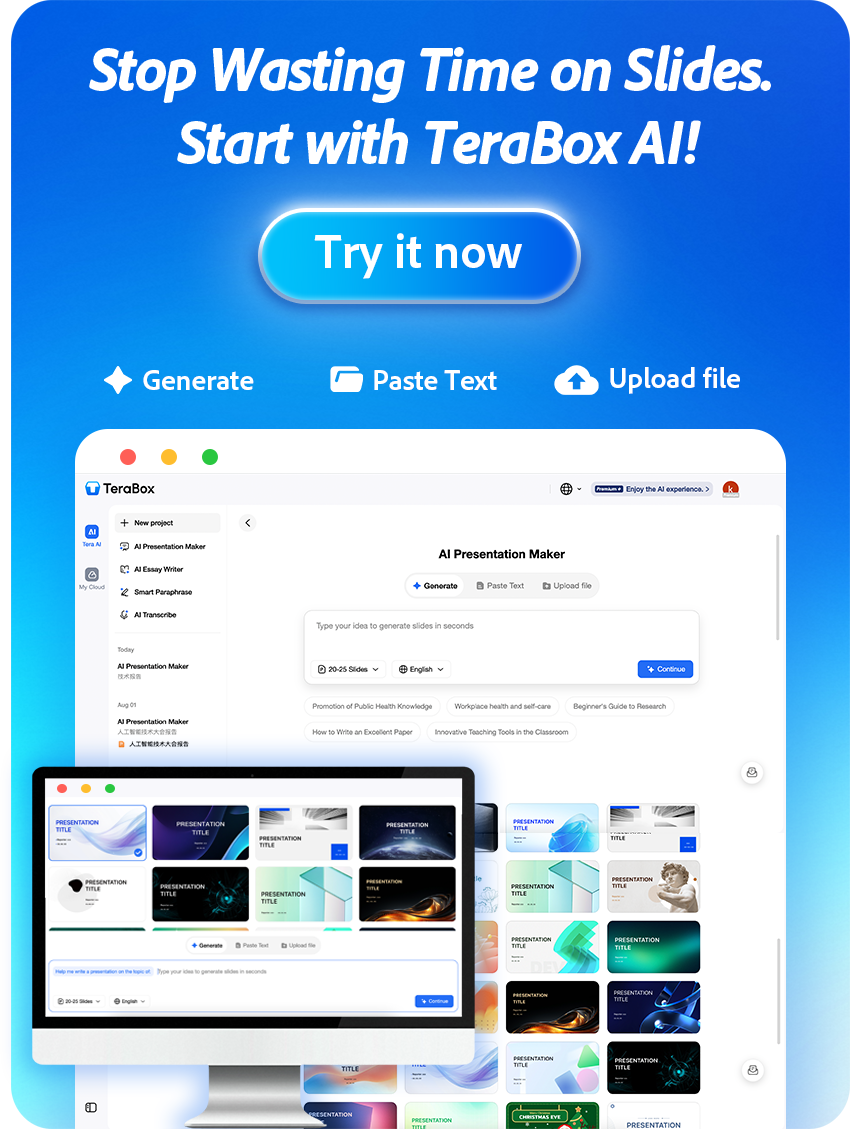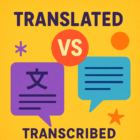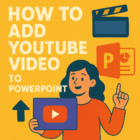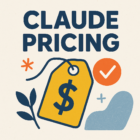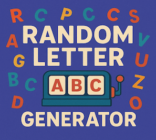Presenting your research effectively matters — at conferences a clear paper presentation format can be the difference between a talk that’s noticed and one that’s overlooked. For example, researchers who align their slides and abstract with conference guidelines often receive more questions and invitations for collaboration after their session. This article lays out practical, research-backed ways to structure your presentation, craft a compelling paper abstract, and design slides that support your message.
Read on for concise guidance on the formats used in conferences and seminars, step-by-step slide creation, a ready-to-use sample abstract, and actionable tips to improve your work and confidence as a presenter.
Mastering a proper presentation format is crucial for students, researchers, and professionals who share their work at conferences, departmental seminars, or industry meetings. A well-structured approach makes complex ideas easier to follow, helps reviewers and audience members grasp your main contributions, and increases the chances your research paper or talk will generate useful feedback and opportunities.
Common challenges presenters face include unclear abstracts that fail to summarize the contribution, improper slide formatting that makes data hard to read, and ineffective presentation techniques that lose audience interest. These issues can lead to lower session attendance, fewer questions, and missed collaboration opportunities.
This section lays the groundwork for the rest of the article: we’ll define common formats, walk through the key components of an effective paper presentation format, and provide practical tips for slides, a sample abstract you can adapt, and techniques to keep your audience engaged. Next: formats — oral presentations, poster presentations, and digital slides.
What are Paper Presentation Formats
Paper presentations commonly appear in three formats — oral presentations, poster presentations, and digital slides — and each has its own structural and delivery requirements depending on the conference, field, or classroom setting.
- Oral presentations: A timed talk delivered to a session of attendees, typically followed by a short Q&A. Structure emphasizes a clear narrative (introduction → methods → results → conclusion) and tight timing (for example, a 20-minute session with 5 minutes for questions).
- Poster presentations: Visual displays used in an exhibition area where presenters discuss their work one-on-one. Posters prioritize concise content and strong visuals so passersby can quickly grasp the study’s aims and findings.
- Digital slides: Slide decks (PowerPoint, Google Slides, etc.) used for sequential storytelling during talks or webinars. Slides allow more detail than a poster but should avoid overcrowding; they support conference papers and talks with charts, figures, and key points.
Choosing the right format depends on the conference and your goals: oral sessions favor concise, well-rehearsed delivery; posters are ideal for exploratory work and direct feedback; digital slides are best for step-by-step explanation of methodology and findings. Always check the specific conference guidelines for session length, poster dimensions, and slide limits before you prepare your content.

Key Components of an Effective Paper Presentation Format
Creating an effective paper presentation format means structuring your material so the audience follows your argument, remembers the findings, and can trace your research logic. Below are five actionable components to include and how to format each one for clarity and impact.
1) Title and Author Details: Clear and concise presentation title.
What to include: a short descriptive title (6–12 words), author names, primary affiliation, and a contact email or ORCID for the presenting author. Example title: “Improving Urban Air Quality Using Low-Cost Sensors.”
Format tips: Put the title on the title slide in a large sans-serif font (32–40 pt); list authors and affiliations in a smaller size (18–24 pt). Make sure the presenting author is marked (e.g., “*Presenting author”).
2) Abstract: How to structure a compelling abstract.
Abstract template (one paragraph, 150–250 words): 1–2 sentences stating the objective/problem, 1 sentence summarizing the methodology, 1–2 sentences with key quantitative or qualitative results, and 1 sentence that states the main conclusion or implication.
Micro-example (4 sentences): This study examines whether low-cost sensors provide reliable hourly PM2.5 estimates in urban neighborhoods. We deployed 30 sensors for six months and compared readings to regulatory monitors. Sensors tracked diurnal patterns and detected pollution spikes, with mean bias <10% after calibration. The results suggest these devices can support neighborhood-level exposure assessments and inform local mitigation strategies.
Practical note: Most conferences expect 150–250 words; check the conference guidelines and make sure the abstract highlights novelty and findings clearly.
3) Introduction and Objective: Present background and research goals.
How to open: Start with 1–2 sentences that frame the problem and why it matters to your field. Follow with a clear statement of objectives or hypotheses.
- Opening sentence example: “Urban communities face disproportionate air pollution exposure; this study tests low-cost sensors as a scalable monitoring solution.”
- Two quick tips: (1) Keep background brief—limit to key literature or one statistic; (2) State 1–2 clear objectives (e.g., validate sensors; assess spatial variability).
4) Methodology, Results, and Discussion: Organized content for clarity.
Methodology: Provide concise bullet points covering sample, instruments, and analysis approach (one slide for each subpart if needed). Use visuals (map of sites, flowchart of analysis).
Results: Focus on 2–4 main findings. Compress each finding into a single slide with a clear title, one chart or table, and one short takeaway sentence.
Discussion: On 1–2 slides, interpret results relative to the literature, state limitations, and highlight implications for practice or future research.
Tip for complex results: Break dense tables into multiple slides or present a summarized figure, then include a “full results” slide you can skip during the talk but reference in Q&A.
5) Conclusion and References: Summarize findings and acknowledge sources.
Conclusion slide: Summarize your top 2–3 findings in bullets and end with one practical takeaway or recommended next step. Keep this to 1–2 sentences that your audience will remember.
References: Include only the most relevant 3–5 citations on a “References” slide or provide a single slide with a link to a document (e.g., a one-page PDF or project page). Example reference line: Doe J., & Smith A. (2023). Low-cost sensor validation. Journal of Environmental Monitoring, 12(3), 123–135.
Quick checklist before you present: title slide with affiliations; 150–250 word abstract saved separately; clear objectives in the intro; 1 slide per major finding; concise conclusion slide; and a reference slide or document link. Make sure your slides align with the conference’s formatting rules and the intended audience for your research paper or talk.

Tips for Preparing Your Paper Presentation
Preparing a compelling paper presentation requires deliberate planning and practical habits. Below are focused, actionable tips to help you manage time, craft effective visuals, and keep your audience engaged so your presentation delivers impact.
1) Time management and prioritizing key points.
- Plan in minutes: allocate roughly 1–2 minutes per slide (adjust for total session length). For a 15–20 minute talk aim for 10–12 slides; for 20–25 minutes aim for 12–15 slides.
- Structure by priority: open with 1–2 key points, spend most time on the main findings, and reserve 2–5 minutes for Q&A.
- Rehearsal schedule (example): 1) dry run alone, 2) timed run, 3) run with notes, 4) feedback run with a colleague, 5) final timed polish. Use a stopwatch and record one timed run to check pacing.
- Make sure you build in buffer minutes for technical issues or audience questions.
2) Using visuals, charts, and tables effectively.
- One idea per visual: each chart or table should support a single takeaway. Title the slide with that takeaway sentence.
- Readability rules: use sans-serif fonts, title 32–40 pt, body text 24–28 pt minimum; avoid more than 6 bullet points per slide and keep lines short (6–8 words preferred).
- Design tips: use high-contrast colors, simple legends, and callouts for important values; break dense tables into multiple slides or show a summary and link to full data in supplementary material.
- Make sure images are large enough to be visible from the back of a conference room and include alt text or a data appendix for virtual attendees.
3) Maintaining audience engagement throughout the presentation.
- Start with a brief hook — a surprising fact, a short story, or a question that highlights why the topic matters to the audience.
- Use interactive techniques: one quick poll (1 minute), a rhetorical question, or a 30–60 second Q&A/check-in mid-talk to re-center attention.
- Vary delivery: change vocal pace, pause for emphasis, and use simple gestures to guide attention to key slide elements.
- Feedback loop: after a practice run, solicit feedback from peers focused on clarity of the main points and whether any slides felt overloaded.
Quick checklist before you present: time each section in minutes, reduce text-heavy slides, test AV and remote connections, confirm font/readability from a distance, and schedule at least one feedback run. These practical steps will make your presentations clearer, more persuasive, and more likely to prompt useful questions and follow-up from your audience.
Step-by-Step Guide to Creating Your Slides
Creating effective presentation slides means choosing the right template, balancing text and visuals for readability, and keeping a consistent look so your audience can follow the research story. The slides should support your spoken presentation, not duplicate it.
1) Choosing the right template
- When to use which: use a simple title-plus-visual template for data-driven slides (one big figure or chart), and a minimal text template for conceptual slides (short bullets + icon).
- Avoid text-heavy templates; reserve dense tables for a supplementary slide or a linked document.
- Make sure the template matches conference branding only if required by the conference organizers.
2) Balancing text, visuals, and readability
- Number of slides: plan ~1–2 minutes per slide. For a 15–20 minute talk, aim for 10–15 slides; adjust if your session allows more minutes.
- Fonts and sizes: use sans-serif fonts (e.g., Arial, Calibri, or Roboto). Title: 32–40 pt; body text: 24–28 pt minimum. Avoid decorative fonts for body text.
- One idea per slide: include one clear headline that states the takeaway, one supporting visual (chart, photo, or diagram), and 1–3 short bullet points if needed.
- Visual design rules: follow the rule of thirds for composition, use callouts to highlight values, and limit colors to a consistent palette with high contrast for legibility.
3) Consistency in fonts, colors, and layout
- Create a small style sheet: choose 2 fonts (title + body), 3 colors (background, primary accent, highlight), and one slide grid (title top, visual left/right, bullets opposite).
- Maintain consistent placement of logos, slide numbers, and section headers so reviewers and audience members can scan quickly.
- Make sure headings, subheadings, and captions use consistent capitalization and punctuation.
4) Practical slide breakdown (example)
- Title slide (title, authors, affiliation, presenting author) — 1 slide.
- Introduction & objectives — 1 slide.
- Methods (map/flowchart) — 1–2 slides.
- Key results — 2–4 slides (one main finding per slide; each with a visual and a one-line takeaway).
- Discussion & implications — 1–2 slides.
- Conclusion & next steps — 1 slide.
- References / supplementary / acknowledgments — 1 slide or link to a document.
5) Accessibility and practice
- Color contrast and accessibility: use high-contrast color combinations (dark text on light background or vice versa) and test slides with a contrast checker. Add alt text or a short caption for key images if the platform supports it.
- Practice with slides: rehearse your timed presentation at least twice with the final slide deck; do a final run in the room or with remote video to check appearance and timings in minutes.
- Make sure your slide file is saved in multiple formats (PPTX and PDF) and uploaded to any conference platform ahead of time if required.
| Slide Element | Recommendation |
|---|---|
| Title Font | 32–40 pt, sans-serif |
| Body Font | 24–28 pt, sans-serif |
| Number of Slides | 10–15 for a 15–20 minute talk (~1–2 minutes per slide) |
| Visuals | One key visual per slide; use clear legends and callouts |
| Practice | Timed run-throughs; test AV and remote view |
These steps will help you produce slide decks that present your research clearly, respect the structure of a conference talk, and make it easy for the audience to take away your main points. For complex papers, include a short “supplementary” slide or a link to a document with full tables and methods so you can keep the main deck focused and readable.
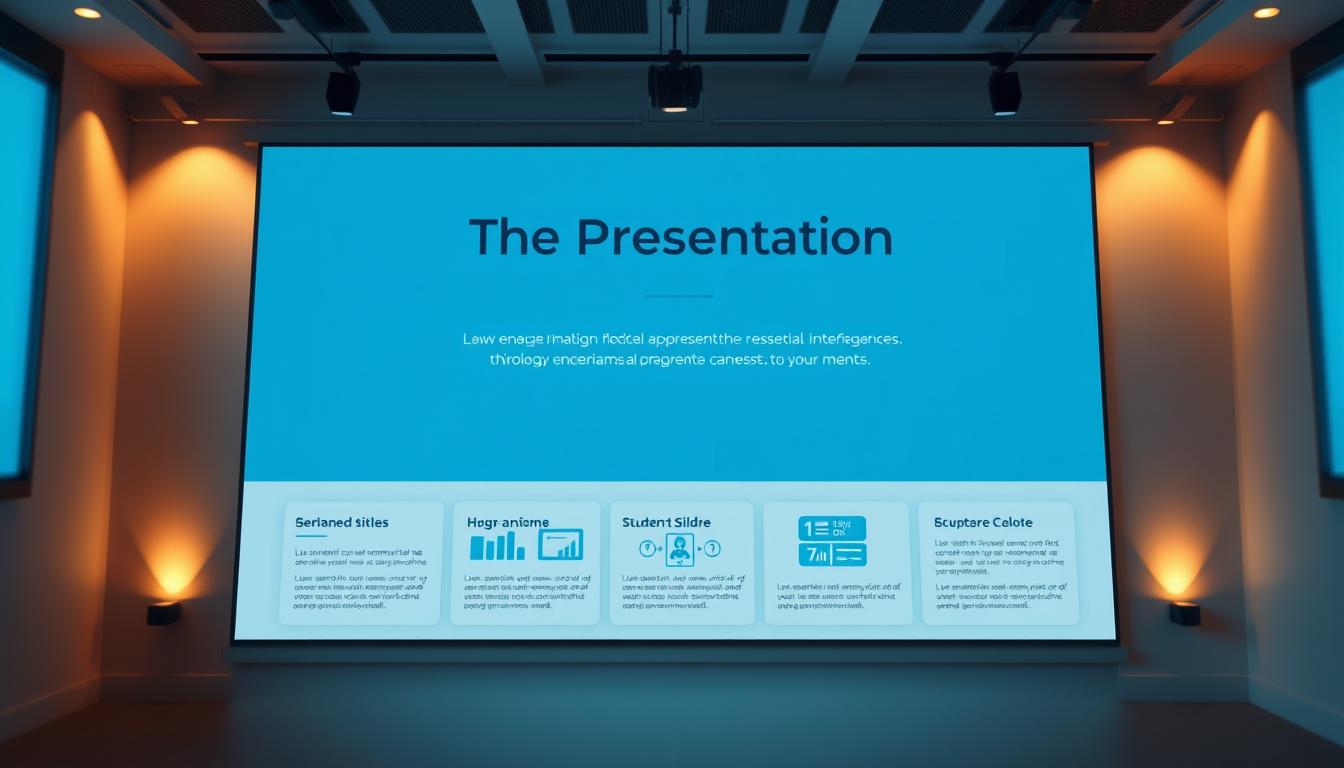
Sample Abstract Format for Paper Presentation
Creating an effective abstract is critical for your paper presentation; it’s often the first thing reviewers and conference attendees read. A strong abstract succinctly states the objective, summarizes the methods, highlights the main findings, and explains the implication or contribution to the field. Most conferences expect 150–250 words, but always check the specific word limit for the conference or journal.
The checklist below shows the essential elements to include:
- Objective / research question: one or two sentences that state what you investigated and why the topic matters.
- Methods / approach: brief description of the study design, data, or analysis (mention sample size or data source if relevant).
- Key findings: one or two concise results with quantitative cues where possible (e.g., effect size, percent change, p-value if appropriate).
- Conclusion / significance: a final sentence explaining the implication, contribution, or next steps.
Ready-to-use sample abstract (~200 words):
This study evaluates the performance of low-cost air quality sensors for measuring neighborhood-level PM2.5 concentrations in an urban area. We deployed 30 sensors across five neighborhoods for six months and calibrated readings against regulatory reference monitors. After calibration, sensor-derived hourly PM2.5 estimates showed strong correlation with reference monitors (R = 0.88) and captured diurnal pollution patterns and episodic spikes associated with nearby traffic events. The sensors tended to under-report peak concentrations by an average of 8% before calibration but produced reliable relative spatial differences after correction. These findings suggest that calibrated low-cost sensors can provide useful, high-resolution information for exposure assessment and local policy interventions, offering a cost-effective supplement to sparse regulatory networks.
Two brief alternative examples you can adapt:
- Quantitative example (short): “We conducted a randomized controlled trial with 120 participants to test whether a brief mindfulness intervention reduces exam-related anxiety. Intervention participants reported a 25% reduction in self-reported anxiety scores versus controls (p < 0.01). The results support scalable stress-reduction strategies for students.”
- Qualitative example (short): “Through semi-structured interviews with 24 teachers, this study explores how remote teaching altered classroom assessment practices. Thematic analysis identified shifts toward formative, technology-mediated assessment and concerns about equity. Findings highlight practical ways schools can support assessment integrity in hybrid learning environments.”
Adapting for conference papers vs extended submissions: for an initial conference abstract emphasize novelty and main findings; for full papers add brief mention of theoretical framing and detailed methods. Make sure the abstract aligns with your slide narrative and the topic stated in your conference submission or session proposal.

Advanced Techniques to Enhance Your Presentation
Using a few advanced techniques can lift your paper presentation from informative to memorable. Below are three practical ways to engage your audience, solicit useful feedback, and adapt for virtual or hybrid settings.
1) Storytelling: structure complex research into a narrative
Use a simple storytelling arc—setup, conflict, resolution—to make technical work relatable. Setup: frame the problem and why it matters to your field. Conflict: show the research gap or obstacle you addressed. Resolution: present your key finding and its practical implication.
Micro example (opening): “Cities struggle to monitor air quality at the neighborhood level (setup). Existing monitors are sparse and costly, leaving residents in the dark (conflict). Our study tests low-cost sensors and shows they can reliably map hotspots, pointing to targeted interventions (resolution).”
2) Interactive elements: add short polls and a timed Q&A
Plan one 2–3 minute interaction to boost engagement without derailing timing. Options include a single multiple-choice poll, a quick show of hands (in-person), or a 60-second quiz slide that asks the audience to predict a result before you reveal it.
- Schedule interactions at logical breaks (after methods or after the key result).
- Reserve 2–5 minutes at the end for audience questions; state this at the start so attendees know there will be time for questions.
- After the run-through, solicit feedback from a colleague on whether the interactive element felt natural and helpful.
3) Virtual and hybrid presentation tips
For remote audiences, small technical and delivery choices matter. Check camera framing (head and shoulders), test audio quality (use an external mic if possible), and pace slides slightly slower than for an in-person talk so remote viewers can read charts.
- Share slides as PDF if screen-share lag is an issue; have the native file ready for chat upload.
- Use platform features: enable one quick poll, monitor chat for questions, and announce how attendees can ask questions (chat or mic).
- Make sure any interactive element also works for remote participants (polls that support both in-room and remote answers).
Try adding one interactive technique in your next practice run and ask for feedback specifically on timing and clarity. Small experiments like a single poll or a short story opener often produce the biggest gains in audience attention and post-session discussion.
Common Mistakes to Avoid in Paper Presentations
Delivering a successful paper presentation often comes down to avoiding a few predictable mistakes. Below are three common errors presenters make, why they matter, and concrete fixes you can apply before your next talk.
1) Overloading slides with information.
Why it’s a problem: Too much text or too many data points overwhelms the audience and buries your main finding.
How to fix it:
- One main idea per slide — use a single headline that states the takeaway.
- Limit to 3–6 bullets or ideally 6–8 words per line; use one clear visual (chart or image) instead of dense tables.
- If you must include detailed tables, move them to a supplementary slide or an appendix document and reference them briefly in the talk.
Before / after example:
Before: a slide with a full paragraph describing methods, three dense tables, and five long bullet points. After: split into two slides — one with a 1-line methods summary and a flowchart, the other with one key table or chart titled by the single takeaway.
2) Reading slides word-for-word instead of explaining concepts.
Why it’s a problem: Reading slides verbatim makes the presentation feel scripted and reduces audience engagement.
How to fix it:
- Use slides as prompts, not scripts — put short bullet prompts and speak the fuller explanation in your own words.
- Practice transitions so you can expand on each bullet with a short example or implication rather than reciting text.
- Make eye contact with the audience (or camera) and pause after each key point to let the idea register.
3) Neglecting the importance of practicing delivery.
Why it’s a problem: Skipping rehearsal increases anxiety, leads to poor timing (running over or under), and reduces clarity.
How to fix it:
- Time your talk in minutes and follow the 1–2 minutes per slide guideline; include 2–5 minutes for Q&A.
- Practice at least three timed runs: a solo dry run, a timed run, and a run for feedback with a colleague.
- Record one run to check pacing and filler words; ask two colleagues for focused feedback on clarity and slide density.
| Common Mistake | Quick Fix | Effect |
|---|---|---|
| Overloading slides | One idea per slide; use visuals | Clearer audience takeaway |
| Reading slides | Use prompts; speak naturally | Higher engagement |
| Not practicing | Timed rehearsals; request feedback | Better timing; confident delivery |
Practice checklist before presenting: time the talk in minutes, simplify any overloaded slides, do at least one feedback run with a colleague, and confirm you have 2–5 minutes reserved for questions. These steps make your presentation more professional and increase the likelihood that attendees — and speakers in your session — will follow up with useful questions or collaboration ideas.
Conclusion
Following an effective paper presentation format helps your audience quickly grasp your research question, methodology, and key findings — and increases the likelihood that reviewers, conference attendees, and potential collaborators will engage with your work. Clear structure combined with engaging delivery turns a good conference talk into a memorable one.
- Recap: make sure your title, 150–250 word abstract, and slides present a coherent narrative that highlights the main findings and their significance.
- Combine structure with engagement: pair a tight slide structure (one idea per slide) with techniques such as a short story opener or a single interactive poll to keep the audience focused.
Action step: draft your title and a ~200-word abstract, build a 10–15 slide deck aligned with that abstract, and rehearse two timed runs this week (one solo, one with a colleague for feedback). If you are submitting to a conference, make sure you check the conference organizers’ guidelines for word limits, slide requirements, and session timing.
With deliberate preparation and practice, your presentations — whether at academic conferences or departmental seminars — will communicate your research more clearly and invite the questions and collaborations that advance your field.
FAQ
In this section we answer common questions presenters ask about paper presentation formats, abstracts, slide design, and delivery. These concise answers are tailored for students, researchers, and professionals preparing for conferences or departmental talks — and include practical reminders to check your conference organizers’ guidelines.
1)What is the correct paper presentation format for academic conferences?
Formats vary by conference and field, but the common structure is: a clear title and author line, a 150–250 word abstract (unless the organizers specify otherwise), and a presentation that follows introduction → methodology → results → discussion → conclusion. For oral sessions, expect strict timing (often 10–25 minutes per speaker) and a short Q&A. For posters, follow the specified dimensions and focus on visuals and a concise message. Always consult the conference organizers’ submission guidelines for exact requirements.
2)How do I write a sample abstract format for paper presentation?
Start with 1–2 sentences stating the research question and why it matters, add 1 sentence on methods (mention sample size or data source if relevant), include 1–2 sentences with the principal results (use quantitative cues if possible), and finish with 1 sentence on the implication or contribution. Aim for clarity and brevity (commonly 150–250 words) and make sure the abstract matches the slides and the topic you submitted.
3)What are the most effective presentation techniques for research papers?
Combine clarity and engagement: (1) Tell a short opening story or state a striking fact to frame the topic, (2) use one clear takeaway per slide and support it with a visual, (3) vary tone and pace and maintain eye contact (or camera focus) to keep attention. Practice timed runs and include one interactive element where appropriate (a poll or a planned rhetorical question) to invite audience participation.
4)How can I design professional slides for my paper presentation?
Choose a clean, consistent template: sans-serif fonts, title 32–40 pt, body 24–28 pt, and a limited color palette with high contrast. Use a single headline per slide that states the takeaway, include one key visual (chart, map, or photo) when possible, and avoid more than 3–6 bullets. Plan your number of slides to match minutes available (roughly 1–2 minutes per slide) and save dense tables or full datasets for supplementary slides or a linked document.
5)What common mistakes should I avoid when presenting a research paper?
Avoid overloading slides with text, reading slides word-for-word, and skipping rehearsal. Fixes: reduce each slide to one idea, use slides as prompts while you explain in your own words, and run at least two timed rehearsals (one solo, one with a colleague). Make sure you reserve time for questions and check AV equipment in advance.
6)How do I keep my audience engaged throughout my presentation?
Use a short hook at the start (story or surprising stat), pace slides so viewers can absorb visuals, and insert one interactive moment (a 1–3 minute poll, a quick quiz, or a planned question to the room). For virtual sessions, slow slide pacing slightly, check audio/video quality, and invite chat questions or a live Q&A at the end. Solicit feedback after practice runs to refine which techniques work best for your audience.
